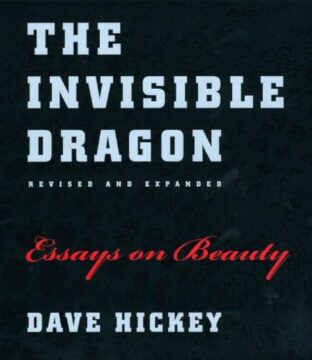Daniel Kodsi and John Maier in The Philosophers’ Magazine:
 Philosophers tend to tolerate a high degree of personal strangeness in one another. More specifically, they tend not to worry – at least explicitly or on the record – about whether the weird philosophical beliefs and the weird non-philosophical actions of a colleague might have a common source. The methodological norm rather is that ideas must stand or fall on their intrinsic merits; apart from anything else, this is probably good politics. Making the obvious psychological peculiarities of an author too operative a consideration within academic life might risk implicating an impractically large number of people. (And in that case, one probably wouldn’t trust most of them to apply the relevant criteria accurately anyway.) But this does make philosophy different from other areas of life, where we readily make informative connections, in both directions, between the strangeness of the person and the strangeness of his beliefs, often with a view to discrediting one or the other.
Philosophers tend to tolerate a high degree of personal strangeness in one another. More specifically, they tend not to worry – at least explicitly or on the record – about whether the weird philosophical beliefs and the weird non-philosophical actions of a colleague might have a common source. The methodological norm rather is that ideas must stand or fall on their intrinsic merits; apart from anything else, this is probably good politics. Making the obvious psychological peculiarities of an author too operative a consideration within academic life might risk implicating an impractically large number of people. (And in that case, one probably wouldn’t trust most of them to apply the relevant criteria accurately anyway.) But this does make philosophy different from other areas of life, where we readily make informative connections, in both directions, between the strangeness of the person and the strangeness of his beliefs, often with a view to discrediting one or the other.
Even in academic philosophy, however, individual eccentricity sometimes becomes too overwhelming to escape remark. In the case of Derek Parfit, one of the first things either a critic or admirer will acknowledge is just how odd a man he was.
More here.
Enjoying the content on 3QD? Help keep us going by donating now.


 Philosopher Peter Godfrey-Smith has devoted his career to examining how animal minds evolved. He blends formidable analytical skills with a deep curiosity about the natural world, mostly experienced at first hand in his native Australia. While writing his latest book, Living on Earth, he spent many hours scrutinizing noisy parrots and cockatoos in his back garden, weeks observing gobies building underwater towers made of shells and seaweed and years closely watching
Philosopher Peter Godfrey-Smith has devoted his career to examining how animal minds evolved. He blends formidable analytical skills with a deep curiosity about the natural world, mostly experienced at first hand in his native Australia. While writing his latest book, Living on Earth, he spent many hours scrutinizing noisy parrots and cockatoos in his back garden, weeks observing gobies building underwater towers made of shells and seaweed and years closely watching  The political spasm that gripped South Korea last night has been widely seen as a portent of doom, but it need not be. Taking a page from
The political spasm that gripped South Korea last night has been widely seen as a portent of doom, but it need not be. Taking a page from  T
T AI has become uncannily good at aping human conversational capabilities. New research suggests its powers of mimicry go a lot further, making it possible to replicate specific people’s personalities. Humans are complicated. Our beliefs, character traits, and the way we approach decisions are products of both nature and nurture, built up over decades and shaped by our distinctive life experiences.
AI has become uncannily good at aping human conversational capabilities. New research suggests its powers of mimicry go a lot further, making it possible to replicate specific people’s personalities. Humans are complicated. Our beliefs, character traits, and the way we approach decisions are products of both nature and nurture, built up over decades and shaped by our distinctive life experiences. V
V
 The Question of Palestine was published in 1979, one year after Said’s pivotal book Orientalism and two before Covering Islam—a trilogy that helped found post-colonial theory and develop a framework to critique the West’s stereotypical and often racist lens of the Arab and Muslim world. The Question of Palestine was particularly noteworthy for being the first English-language book to narrate the Palestinian experience and deconstruct Zionism as a settler-colonial project.
The Question of Palestine was published in 1979, one year after Said’s pivotal book Orientalism and two before Covering Islam—a trilogy that helped found post-colonial theory and develop a framework to critique the West’s stereotypical and often racist lens of the Arab and Muslim world. The Question of Palestine was particularly noteworthy for being the first English-language book to narrate the Palestinian experience and deconstruct Zionism as a settler-colonial project. Toi Labs TrueLoo
Toi Labs TrueLoo Cecilia hadn’t expected the video to resonate so deeply. She often watched online talks about her field of research. But this one didn’t just present pioneering scientific ideas; it put into words the uncomfortable reality she had been grappling with. She was nearly 30 years old and single, and she had recently interviewed for a postdoc position that would require her to uproot her life yet again. She couldn’t ignore a growing question: whether and how she would be able to have children. The talk, by anthropologist Marcia Inhorn, explored the silent struggles many highly educated women face in balancing their careers not just with motherhood, but with what comes before: relationships and planning for a family. It was an “aha!” moment. Cecilia sent it to her friend and fellow academic Erika, who responded immediately: “Why haven’t we talked about this before?”
Cecilia hadn’t expected the video to resonate so deeply. She often watched online talks about her field of research. But this one didn’t just present pioneering scientific ideas; it put into words the uncomfortable reality she had been grappling with. She was nearly 30 years old and single, and she had recently interviewed for a postdoc position that would require her to uproot her life yet again. She couldn’t ignore a growing question: whether and how she would be able to have children. The talk, by anthropologist Marcia Inhorn, explored the silent struggles many highly educated women face in balancing their careers not just with motherhood, but with what comes before: relationships and planning for a family. It was an “aha!” moment. Cecilia sent it to her friend and fellow academic Erika, who responded immediately: “Why haven’t we talked about this before?” While behind the wheel of a car, a significant level of distraction can accompany one action in particular: phone usage. For some, this can result in severe driving impairment. It represents a serious danger hidden within the connective rhythms of our everyday lives.
While behind the wheel of a car, a significant level of distraction can accompany one action in particular: phone usage. For some, this can result in severe driving impairment. It represents a serious danger hidden within the connective rhythms of our everyday lives. Americans say they are
Americans say they are  Writing in 1993, the late critic Dave Hickey described beauty as a kind of dirty word in the art world, believed to be hopelessly tainted by the market: “Beautiful art sells. If it sells itself, it is an idolatrous commodity; if it sells something else, it is a seductive advertisement.” Perhaps the clearest sign of beauty’s shifting fortune is the rehabilitation of Hickey’s own critical reputation. In his introduction to the 2023 reissue of his 1993 collection The Invisible Dragon: Essays on Beauty, he describes the paradoxical combination of renown and revulsion with which his work was met: “In the Dragon’s wake,” he writes, “the endowed lecturer was deposited unceremoniously at a Ramada Inn beside an empty highway and left to dine out of the candy machine.” (Indeed, I recall being assigned an essay from the book in a methods seminar during my first semester of graduate school back in 2010, where it was cast as a brash and unserious provocation.) But returning to The Invisible Dragon now, in anticipation of the new collection of his writings Feint of Heart, posthumously published by David Zwirner Books this past September, I wonder if he wasn’t on to something. For Hickey, the invocation of beauty didn’t represent a conservative retrenchment, but an appealing anarchy: It directly addresses itself to the beholder, requiring neither interpretive intermediaries nor ameliorative social purpose.
Writing in 1993, the late critic Dave Hickey described beauty as a kind of dirty word in the art world, believed to be hopelessly tainted by the market: “Beautiful art sells. If it sells itself, it is an idolatrous commodity; if it sells something else, it is a seductive advertisement.” Perhaps the clearest sign of beauty’s shifting fortune is the rehabilitation of Hickey’s own critical reputation. In his introduction to the 2023 reissue of his 1993 collection The Invisible Dragon: Essays on Beauty, he describes the paradoxical combination of renown and revulsion with which his work was met: “In the Dragon’s wake,” he writes, “the endowed lecturer was deposited unceremoniously at a Ramada Inn beside an empty highway and left to dine out of the candy machine.” (Indeed, I recall being assigned an essay from the book in a methods seminar during my first semester of graduate school back in 2010, where it was cast as a brash and unserious provocation.) But returning to The Invisible Dragon now, in anticipation of the new collection of his writings Feint of Heart, posthumously published by David Zwirner Books this past September, I wonder if he wasn’t on to something. For Hickey, the invocation of beauty didn’t represent a conservative retrenchment, but an appealing anarchy: It directly addresses itself to the beholder, requiring neither interpretive intermediaries nor ameliorative social purpose.